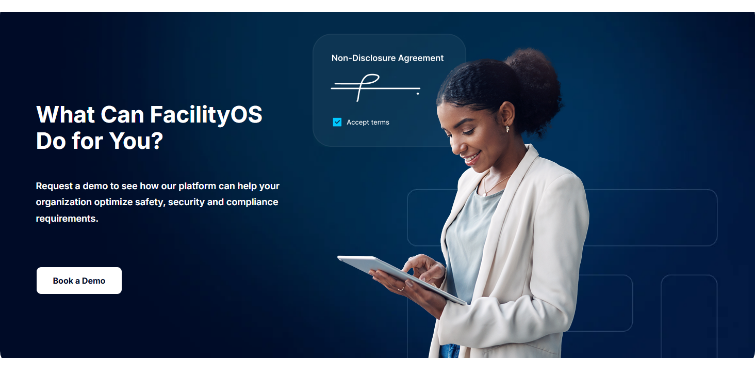7 Essential Elements of Vendor & Contractor Credentialing for Campus Renovations
Campus renovations never stop. At any given moment, a university might have a dozen active projects: new labs, residence hall upgrades, infrastructure repairs, each involving general contractors, subcontractors, and specialized vendors. Facilities teams face a straightforward but high-stakes challenge: ensuring every contractor on campus is qualified, compliant, and cleared to work.
The problem is that most institutions still track compliance manually. Insurance certificates arrive via email. Safety training records sit in file cabinets. Background checks are stored in shared drives. When a contractor shows up at the lobby, security has no quick way to verify whether their credentials are current or even exist.
The scale of campus construction activity makes this challenge even more pressing. Between 2021 and 2023, investment in existing campus buildings grew by 33%, reflecting heightened demand for renovation projects across higher education. Schools are simultaneously managing new construction and extensive renovation work, with roughly 20% of all campus research space requiring updates or modernization.
The Compliance Challenge in Higher Education

Campus projects overlap constantly. A contractor might be cleared for one building but not another. Their insurance might expire mid-project. A subcontractor might show up without the required safety certifications. Facilities teams juggle insurance certificates, OSHA training records, background checks, and project-specific requirements across dozens of vendors simultaneously.
The complexity intensifies when renovations occur in occupied buildings. Unlike new construction on vacant land, renovation work often happens alongside ongoing academic operations. Contractors working on a residence hall renovation might be operating in close proximity to students. Lab renovations require strict adherence to safety protocols while researchers continue adjacent work. These scenarios demand more rigorous credentialing and real-time compliance verification.
When compliance gaps emerge, the consequences multiply quickly. A lapsed insurance policy doesn't just create liability exposure but it can halt construction, trigger audit findings, and put students and staff at risk. Without a centralized system, teams discover these gaps too late: when the contractor is already on site, or worse, when something goes wrong.
Consider the typical renovation timeline. Projects involving building envelope upgrades, mechanical and electrical system retrofits, or accessibility improvements can span multiple semesters. During that period, contractor credentials expire, insurance policies lapse, and personnel change. Manual tracking systems can't keep pace with these evolving requirements across simultaneous projects.
Key Elements of Effective Campus Contractor Credentialing
1. Moving Beyond Manual Tracking
Centralizing and digitizing contractor credential documentation is the foundation of better compliance management. Rather than chasing certificates through email threads or waiting for contractors to bring paper copies to the front desk, institutions need a single repository where every required document is collected, stored, and accessible in real-time.
But centralization solves only half the problem. Credentials expire. Insurance lapses. Safety certifications run out. Without automated tracking and advance notifications, facilities teams stay in reactive mode by discovering expired documents after they've already become blockers. The goal is visibility 30, 60, or 90 days ahead, with workflows that secure renewals before they impact project schedules.
For capital projects especially, where renovation budgets can reach millions of dollars and timelines extend across multiple years, proactive credential management becomes essential. When a major science building renovation requires specialized contractors for laboratory infrastructure, MEP systems, and hazardous material abatement, each vendor category brings distinct credentialing requirements. A centralized system ensures nothing falls through the cracks as projects progress.
2. Approval Workflows That Match Your Process
Approval requirements vary by institution and project type. Some renovations require sign-off from Facilities, EHS, and Procurement. Others add campus security or legal review. Manual systems force these approvals through disconnected channels: email, phone calls, meetings, slowing projects and increasing the risk that someone gets cleared without proper oversight.
Structured workflows route documentation automatically to the right reviewers based on project requirements. Each stakeholder reviews, approves, or requests changes within the same system. The result is a complete audit trail and confidence that every contractor on campus has been vetted by the appropriate teams.
For high-risk work like lab renovations or projects involving geothermal systems, approvals might require additional layers of review. A renovation installing 300 geothermal bores for campus heating and cooling, for instance, demands specialized contractor qualifications and rigorous safety protocols. Digital workflows can automatically escalate these projects to the appropriate technical reviewers and compliance officers.
3. Risk-Based Contractor Classification
Not all contractors present the same level of risk. A vendor delivering office furniture requires different oversight than a contractor performing structural modifications or working with hazardous materials. Leading institutions now implement tiered contractor classification systems that match credentialing requirements to project risk levels.
For example, MacEwan University's contractor classification system:
- Level 1 contractors performing low-risk work might require basic orientation training and proof of insurance.
- Level 2 contractors engaged in moderate-risk activities need supplementary safety training, additional insurance coverage, and documented safety programs.
- Level 3 contractors working on high-risk projects, such as those involving confined spaces, elevated work, or hazardous materials, must demonstrate comprehensive safety management systems and undergo rigorous pre-qualification reviews.
This risk-based approach focuses resources where they matter most while streamlining processes for lower-risk activities. It also provides clarity to contractors about expectations before they bid on projects, reducing confusion and compliance failures downstream.
4. Real-Time Compliance at the Point of Entry
The real test happens at the lobby. When a contractor arrives on campus, can security immediately confirm their compliance status? Or does check-in require phone calls, document searches, and judgment calls about whether to allow access?
Integrating compliance management with visitor sign-in systems creates an automated checkpoint. If credentials are current and approved, the contractor checks in smoothly. If insurance has expired or a required certificate is missing, the system flags the issue instantly before they reach the work site. Security staff no longer guess. The system provides a clear pass-or-fail decision based on real-time data.
This integration becomes particularly important on campuses with multiple active construction sites. A contractor might have valid credentials for one project but lack the specific training required for another. Real-time verification at check-in prevents unauthorized access and ensures contractors only work on projects for which they're properly credentialed.
Related Read: Why Now is the Time to Rethink Your Contractor Compliance Management
5. Building Audit-Ready Compliance
Auditors arrive without warning. When they request contractor compliance records for the past twelve months, facilities teams shouldn't need to reconstruct documentation from scattered files and email archives.
Digital compliance systems integrated with visitor management systems generate audit-ready records automatically. Every document upload, approval decision, expiration alert, and sign-in event is timestamped and logged. When auditors request evidence, teams produce comprehensive reports in minutes instead of scrambling for weeks.
For institutions subject to specific regulatory requirements, such as federal research facilities with controlled access areas or hospitals with HIPAA considerations, maintaining complete audit trails isn't just convenient but it's mandatory. Automated documentation ensures no gaps exist in the compliance record.
6. Reducing Administrative Burden on Facilities Teams
Facilities teams are stretched thin managing work orders, coordinating projects, and responding to emergencies. Manual compliance tracking adds hours of administrative work each week: collecting documents, monitoring expiration dates, filing paperwork, and answering questions about contractor status.
Automation reclaims this time. When contractors submit documents directly into a central system, when expiration reminders send automatically, and when approval workflows route documentation without manual intervention, facilities staff redirect hours toward higher-priority work.
The time savings compound across multiple projects. A university managing ten simultaneous renovation projects might process hundreds of contractor credential submissions annually. Automating this workflow eliminates thousands of hours of manual data entry, document tracking, and status inquiries.
7. Pre-Mobilization Requirements & Project Planning
Effective contractor management begins before work starts. MacEwan University provides a strong example of this approach. During the pre-mobilization phase, MacEwan requires contractors to submit project-specific hazard assessments, emergency response plans, and site-specific safety documentation. Contractors must complete required orientation training and receive access authorization before stepping foot on campus.
For renovation projects in occupied spaces, pre-mobilization planning should verify that contractors have appropriate credentials for working near students and staff, including any specialized certifications required for occupied building renovations. MacEwan's structured process demonstrates how ensuring complete credential verification at this early stage prevents costly access delays and compliance incidents later in the project lifecycle.
A Structured Approach to Contractor Compliance
ContractorOS offers a purpose-built solution for contractor compliance management. The platform centralizes document collection, automates expiration tracking, manages approval workflows, and integrates real-time compliance status with visitor sign-in systems.
By consolidating all compliance functions in one platform, ContractorOS helps higher education facilities teams ensure only qualified, compliant contractors access campus while reducing administrative burden and maintaining audit-ready records. It's compliance management designed for the complexity of campus operations, without the chaos of disconnected systems.
Stay updated with industry insights, success stories, and more by following us on social media for the latest FacilityOS content.
Table of Contents
Brandon Cohen




 Follow us on Facebook
Follow us on Facebook  Follow us on X
Follow us on X
 Follow us on LinkedIn
Follow us on LinkedIn